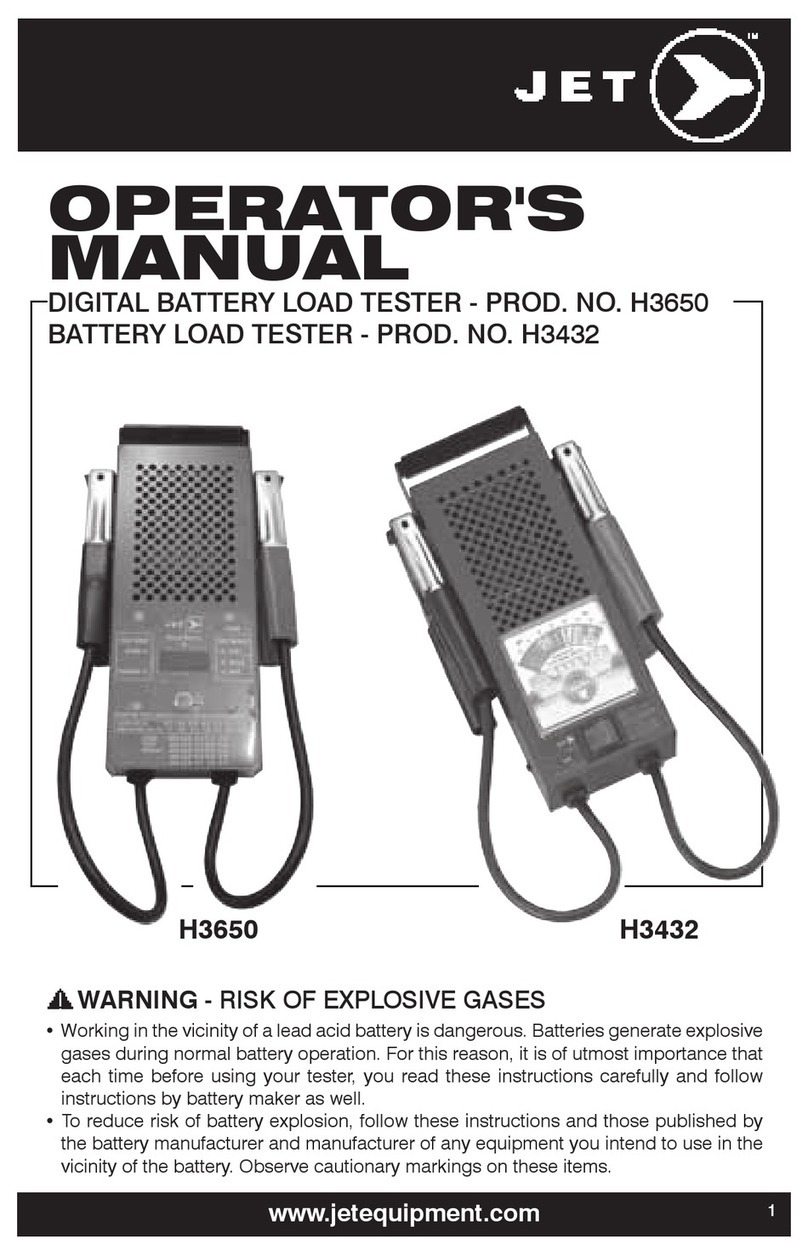IMPORTANT:
BOTH JAWS OF EACH CLAMP MUST FIRMLY ENGAGE BATTERY
TERMINAL OR IT WILL NOT FUNCTION PROPERLY.
PREPARING TO TEST:
1.Be sure area around battery is well ventilated while battery is being tested. Gas
can be forcefully blown away by using a piece of cardboard or other
non-metallic material as a fan.
2.Clean battery terminals. Be careful to keep corrosion from coming in contact
with eyes.
3.Inspect the battery for cracked or broken case or cover. If so damaged, do not
use tester.
4.Add distilled water in each cell until battery acid reaches level specified by the
manufacturer. This helps purge excessive gas from cells. Do not overfill.
5.Make load tests only on battery above 60°F(16°C).
6.If necessary to remove battery from vehicle to test, always remove earth
terminal from battery first. Make sure all accessories in the vehicle are off to
ensure you do not cause an arc.
1. CALCULATE STATE OF CHARGE
A. Before a battery can be load tested, you MUST determine the state of charge.
B. The hydrometer is a great tester to show condition of each cell, but on
batteries with non-removable caps the voltmeter is your only choice to
determine state of charge.
C. The specific gravity readings of open vent batteries should not vary more than
50 points between cells. If the variance is more than 50 points, replace the
battery. The specific gravity should be at least 1.230 in all cells. If not, charge
the battery until 1.230 is obtained. In case the battery is very low, a longer
period of time for charging may be required. After charging, remove the
surface charge from the battery. If charging the battery will not bring the
charge to 1.230 then the battery should be replaced.
D. Maintenance free and sealed batteries have an indicator built into the battery
cover. The color of this indicator verifies the gravity condition of the battery:
○If the green ball is visible, the battery is charged.
●If the indicator is dark and the green ball is not visible, the battery is
partially discharged.
◎If the indicator is light yellow, the battery is low on fluid and near the end of
its useful life. DO NOT ATTEMPT RECHARGING OR TESTING IF THE
INDICATOR IS YELLOW.

























